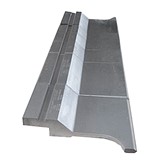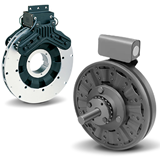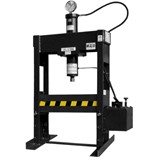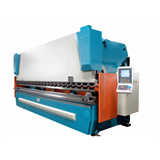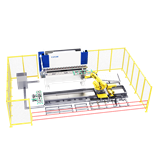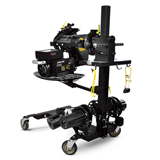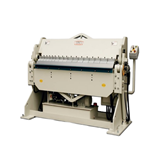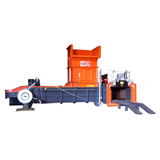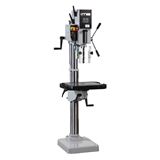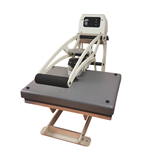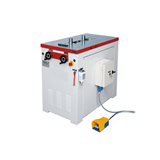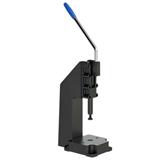Key Takeaways
- Press brake prices in Australia range from $8,000 to over $180,000, depending on size, power (manual, hydraulic, CNC, electric), and features.
- Manual press brakes for light fabrication start from $8,000–$25,000.
- Hydraulic models typically cost $20,000–$80,000 for mid-range tonnage and bed lengths.
- Advanced CNC press brakes start from $40,000, with hybrid models reaching up to $170,000+.
- Running costs, maintenance, and TGA or ISO 9001 compliance impact long-term investment value.
- Financing options such as equipment loans and leasing are widely available in Australia, offering terms from 3 to 7 years.
- Warranty periods often range between 1 to 5 years, depending on the brand and supplier.
Introduction
Buying a press brake is a major investment for any metalworking or fabrication business. Whether you're a small workshop or a large manufacturing plant, choosing the right machine directly impacts your productivity, efficiency, and bottom line.
In this guide, we’ll cover everything you need to know about press brake prices, types, operations, maintenance, financing, compliance, and more — all tailored for Australian buyers.
Types of Press Brakes
Understanding the main types of press brakes will help you select a machine that fits your business needs:
1. Manual Press Brakes
- Ideal for: Low-volume, simple bending tasks.
- Price Range: $8,000–$25,000.
- Pros: Affordable, simple operation.
- Cons: Slow, limited accuracy, higher manual labour.
2. Hydraulic Press Brakes
- Ideal for: Medium to heavy-duty applications.
- Price Range: $20,000–$80,000.
- Pros: Good tonnage capacity, reliable performance.
- Cons: Higher energy consumption, ongoing maintenance.
3. CNC Hydraulic Press Brakes
- Ideal for: High-volume, precise fabrication.
- Price Range: $40,000–$180,000+.
- Pros: Automated bending sequences, exceptional repeatability.
- Cons: Higher initial cost, requires skilled operators.
4. Electric Press Brakes
- Ideal for: High-speed, energy-efficient operations.
- Price Range: $50,000–$150,000+.
- Pros: Fast, lower operating costs, quieter.
- Cons: Expensive upfront.
5. Hybrid Press Brakes
- Ideal for: Businesses seeking efficiency with power.
- Price Range: $60,000–$170,000+.
- Pros: Energy-saving, precise, powerful.
- Cons: Higher servicing costs.
Press Brake Pricing in Australia
Several factors impact the final cost:
- Tonnage (higher tonnage = higher price)
- Bed length (longer = more expensive)
- CNC controls (number of axes, brand)
- Automation options (e.g., robotic arms, quick tool changers)
- Supplier reputation and local support.
Example Prices:
- Small Manual 40T/1600mm: ~$10,000–$20,000
- 100T Hydraulic 3000mm CNC: ~$60,000–$90,000
- 170T Hybrid 4000mm 4-Axis CNC: ~$120,000–$170,000
How a Press Brake Operates
At its core, a press brake bends sheet metal by clamping it between a punch and die.
Basic operation steps:
- Insert material onto the lower die.
- The punch descends, forcing the metal into the die.
- The operator adjusts the back gauge and ram for accurate angles.
CNC versions automate positioning, angles, and sequences.
Press Brake Maintenance Guide
Regular maintenance extends your machine’s lifespan:
- Daily: Clean tooling, inspect for leaks.
- Weekly: Check oil levels, back gauge lubrication.
- Monthly: Inspect hydraulic system, tighten bolts.
- Annually: Full-service inspection (preferably by qualified technicians).
Pro Tip: Budget ~$2,000–$5,000 annually for servicing larger hydraulic/CNC models.
Common Replacement Parts
- Punches and dies
- Hydraulic seals
- Back gauge components
- Control panels (for CNC models)
- Servo motors and drives (electric models)
Sourcing parts from local suppliers ensures faster repair times.
Financing Your Press Brake Purchase
In Australia, businesses typically fund press brakes through:
- Equipment finance loans
- Chattel mortgages
- Operating leases
Loan terms: Typically 3–7 years
Interest rates: Average 6%–10% in 2025, depending on credit profile and asset type.
Government incentives like the Instant Asset Write-Off scheme may apply to eligible purchases under current thresholds.
Warranty and After-Sales Support
- Standard warranty: 1–2 years on most models.
- Extended warranty: Up to 5 years available from premium brands (e.g., Amada, LVD).
- Support: Look for suppliers offering local technicians and fast parts availability.
Compliance and Certification in Australia
When purchasing a press brake in Australia, make sure the machine complies with:
1. Australian WHS Regulations
Machines must meet Workplace Health and Safety (WHS) standards, including safe use of mechanical equipment.
2. ISO 9001 Certification
Ensures the manufacturer follows strict quality management practices.
3. CE Certification
For imported machines, CE marking assures conformity with European health, safety, and environmental protection standards.
4. Electrical Standards
Compliance with AS/NZS 3000 (Electrical Installations - Wiring Rules) is mandatory.
5. Safe Work Australia Guidance
Follow guidelines for operation, maintenance, and risk assessments to remain compliant with national safety requirements.
Operator Training and Safety Tips
Training Programs
Proper training is essential to ensure safe and efficient operation of press brakes. Certified programs are available through industry bodies such as TAFE or local accredited centres. Training will cover machine operation, safety protocols, and troubleshooting.
Safety Features
Modern press brakes are equipped with advanced safety features, such as:
- Emergency stop buttons: Ensure immediate shutdown in case of danger.
- Light curtains: Prevent operator hands or other body parts from being in the danger zone.
- Two-hand controls: Ensure both hands are required for operation to reduce the risk of injury.
- Foot switches: Allow the operator to adjust the machine without needing to remove their hands from the controls.
Training in these safety features will ensure operators are fully aware of the machine’s limits and how to avoid accidents.
Common Press Brake Buyer Questions
How do I choose the right tonnage for my press brake?
- Use the formula: (Material thickness) × (Bend length) × (Material factor).
- Example: Mild steel needs 1 ton per metre per mm of thickness.
What’s better: hydraulic or electric press brake?
- Hydraulic: Best for heavy-duty and thick materials.
- Electric: Better for precision and high-speed, thin material work.
Are used press brakes worth considering?
- Yes, but ensure:
- Full maintenance history available.
- No major frame or hydraulic wear.
- Compliance upgrades are possible (e.g., guards, interlocks).
How long does a press brake last?
- With proper maintenance, 15–20 years or more.
Should I buy local or import a press brake?
- Local suppliers offer better warranty, service, and faster parts.
- Imports can be cheaper upfront but risk delays and compliance issues.
Final Thoughts
Buying the right press brake is not just about initial cost — it’s about productivity, long-term value, and safety compliance. By understanding types, pricing, maintenance, and financing options, you can make a smart, future-proof investment for your Australian business.



